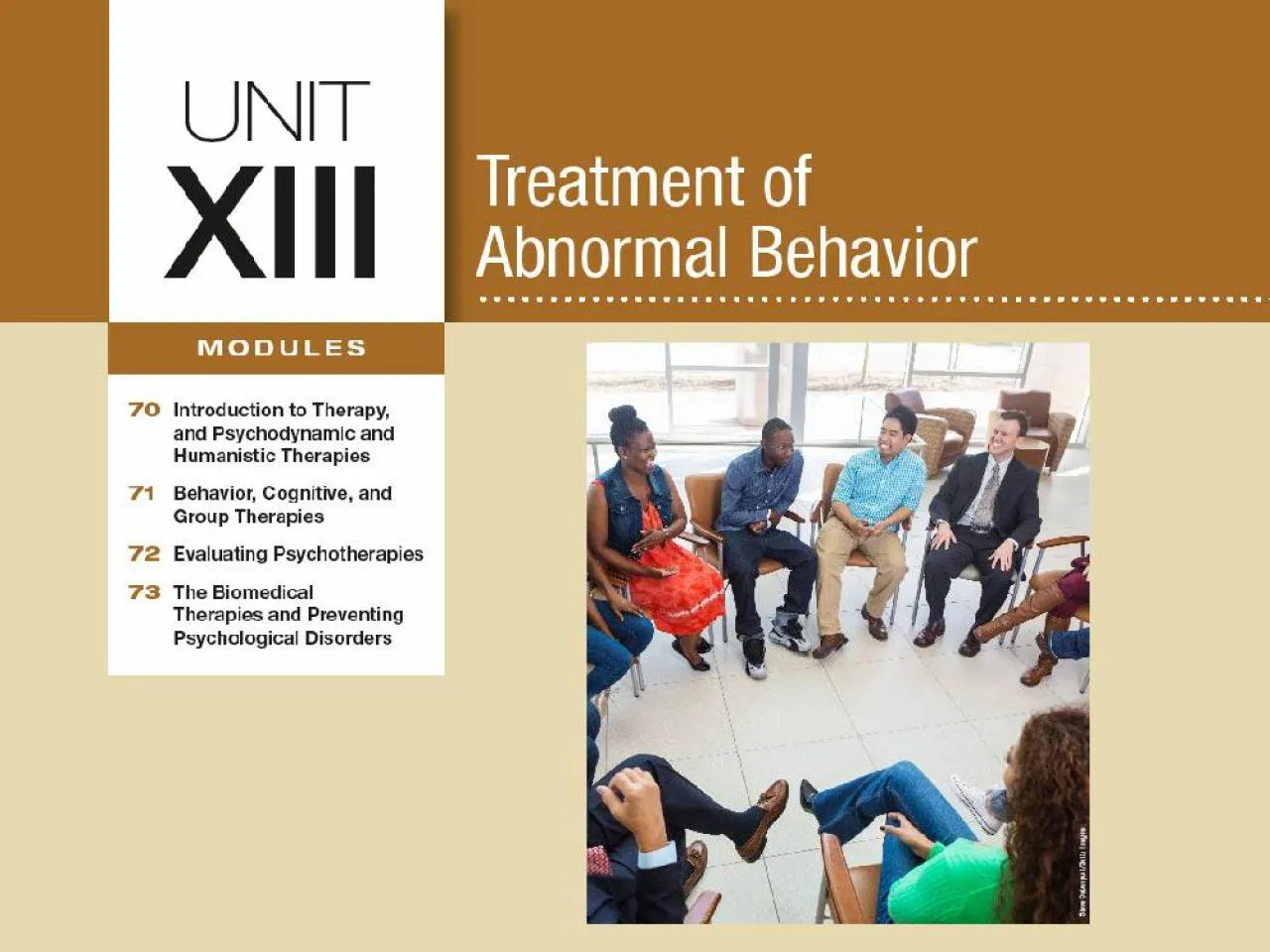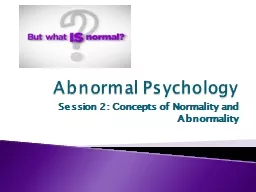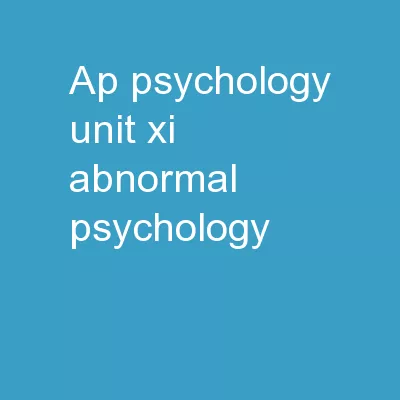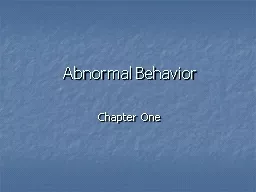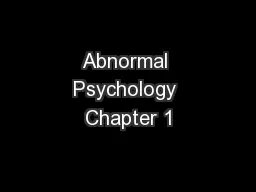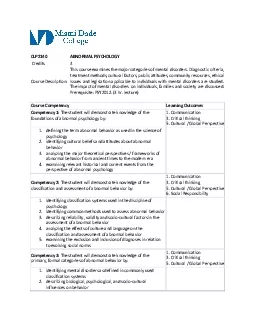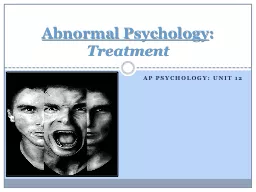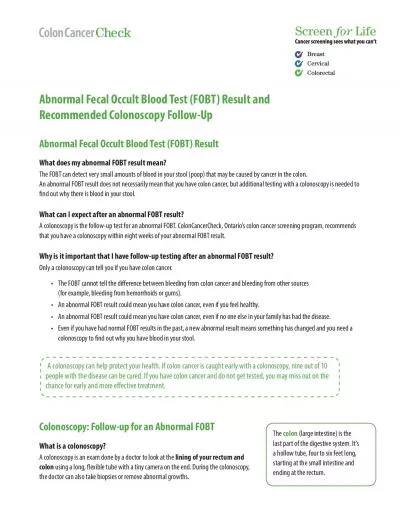PPT-Unit 13 Treatment of Abnormal Behavior
Author : jacey | Published Date : 2022-05-14
Module 71 Behavior Cognitive and Group Therapies Learning Targets 711 Analyze how the basic assumption of behavior therapy differs from the assumptions of psychodynamic
Presentation Embed Code
Download Presentation
Download Presentation The PPT/PDF document "Unit 13 Treatment of Abnormal Behavior" is the property of its rightful owner. Permission is granted to download and print the materials on this website for personal, non-commercial use only, and to display it on your personal computer provided you do not modify the materials and that you retain all copyright notices contained in the materials. By downloading content from our website, you accept the terms of this agreement.
Unit 13 Treatment of Abnormal Behavior: Transcript
Download Rules Of Document
"Unit 13 Treatment of Abnormal Behavior"The content belongs to its owner. You may download and print it for personal use, without modification, and keep all copyright notices. By downloading, you agree to these terms.
Related Documents

